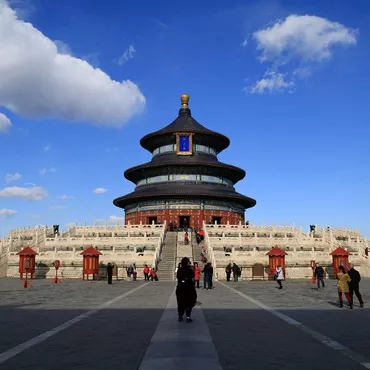Zhangjiawan Ancient Town

Zhangjiawan Ancient Town is located 5 kilometers southeast of Tongzhou City, boasting over 1800 years of history. With its picturesque scenery and profound ancient charm, it stands as a place rich in historical heritage and cultural significance.
The history of Zhangjiawan Ancient Town dates back to the Han Dynasty when its waterways thrived, making it a vital port marketplace. At its peak, it even housed military troops. However, as dynasties changed, the waterways lost their role in transportation, gradually turning Zhangjiawan into a forgotten village. Yet, this neglect inadvertently preserved its ancient architecture, safeguarding these precious cultural treasures to this day.
Within Zhangjiawan Ancient Town, there are numerous sights worth exploring. These relics not only witness the town's history but also reflect the wisdom and diligence of ancient people.

Zhangjiawan City Wall and Tongyun Bridge
>Tongyun Bridge lies outside the southern gate of Zhangjiawan in Tongzhou, spanning the Xiaotaohou River, also known as the Xiaotaohou Bridge. Originally a wooden structure, it was rebuilt in stone by imperial decree during the Ming dynasty. The bridge runs north-south, measuring 13 zhang in length and 3 zhang in width. Its balustrades are adorned with relief carvings of treasure vases, executed with simple yet fluent lines, each vase displaying unique patterns. Exquisite stone lions atop the pillars present various poses.
The city wall of Zhangjiawan was constructed in the 43rd year of Jiajing in the Ming Dynasty (1564 AD), featuring gates on all four sides. Today, remnants of the southern city wall still stand. Tongyun Bridge and the city wall remnants serve as physical evidence for studying the water conservancy projects of Beijing's Tonghui River and the local customs of Zhangjiawan Ancient Town.
In 2013, "Zhangjiawan City Wall and Tongyun Bridge" were incorporated into the national key cultural relics protection units as part of the Beijing section of the Grand Canal. In June 2014, the Beijing-Hangzhou Grand Canal was listed in the World Heritage List, marking the 46th Chinese project included in the World Heritage List.
Youminguan (Protecting the People Temple)
Youminguan is located west of the Er Si Village within Zhangjiawan Town, south of the Grand Canal. It is a Taoist temple commonly known as the Temple of the Heavenly Empress, the Holy Mother's dojo. During the Ming and Qing dynasties, it was the foremost Daoist sacred site in eastern Beijing, hosting the largest temple gatherings.
In the 14th year of Jiajing in the Ming Dynasty (1535 AD), Daoist master Zhou Congshan requested the temple's name, "Youminguan," which remains in use today, though locals still refer to it as Lier Si Temple. The temple occupies over ten mu of elevated land, facing south. Before the temple lies the Grand Canal, an essential waterway for commerce. Inside the temple, a bronze statue of the Golden Flower Holy Mother is worshipped, known locally as the Niangniang Temple.
In the eighth year of Shunzhi in the Qing Dynasty (1651 AD), Emperor Shunzhi visited the temple to pray for offspring, awarding five hundred taels of silver. Local scholar Tian Wenxiao raised an additional three hundred taels for temple repairs and maintenance. Subsequently, the temple underwent numerous renovations during the Qing, Republic of China, and other periods.
Zhangjiawan Mosque
Zhangjiawan Mosque is situated on West Street in Zhangjiawan Town. The main prayer hall dominates the central axis, featuring a hard mountain simple tile structure on a grand scale. The first, third, and fifth sections have arched ridges, while the second section has a larger ridge, majestic and spectacular, with small animals carved exquisitely. The fourth section is a kiln hall with four corners, green glazed treasure dome towering into the sky, the next section is a pavilion roof, unique style. The ancient color painting is beautiful, the brick carving at the west end is exquisite, the mountain round wooden window is lively, the well mouth ceiling is bright and clean, and the north and south are connected by a curved gallery with crabapple columns. The structure is rigorous and scattered.
In summary, Zhangjiawan Ancient Town is a place steeped in historical charm and cultural heritage. Here, one can discover not only abundant historical and cultural relics and unique architectural styles but also beautiful natural scenery and pleasant weather. Whether you seek to delve into Beijing's history and culture or find a serene escape from urban hustle and bustle, Zhangjiawan is undoubtedly a destination worth visiting.
















